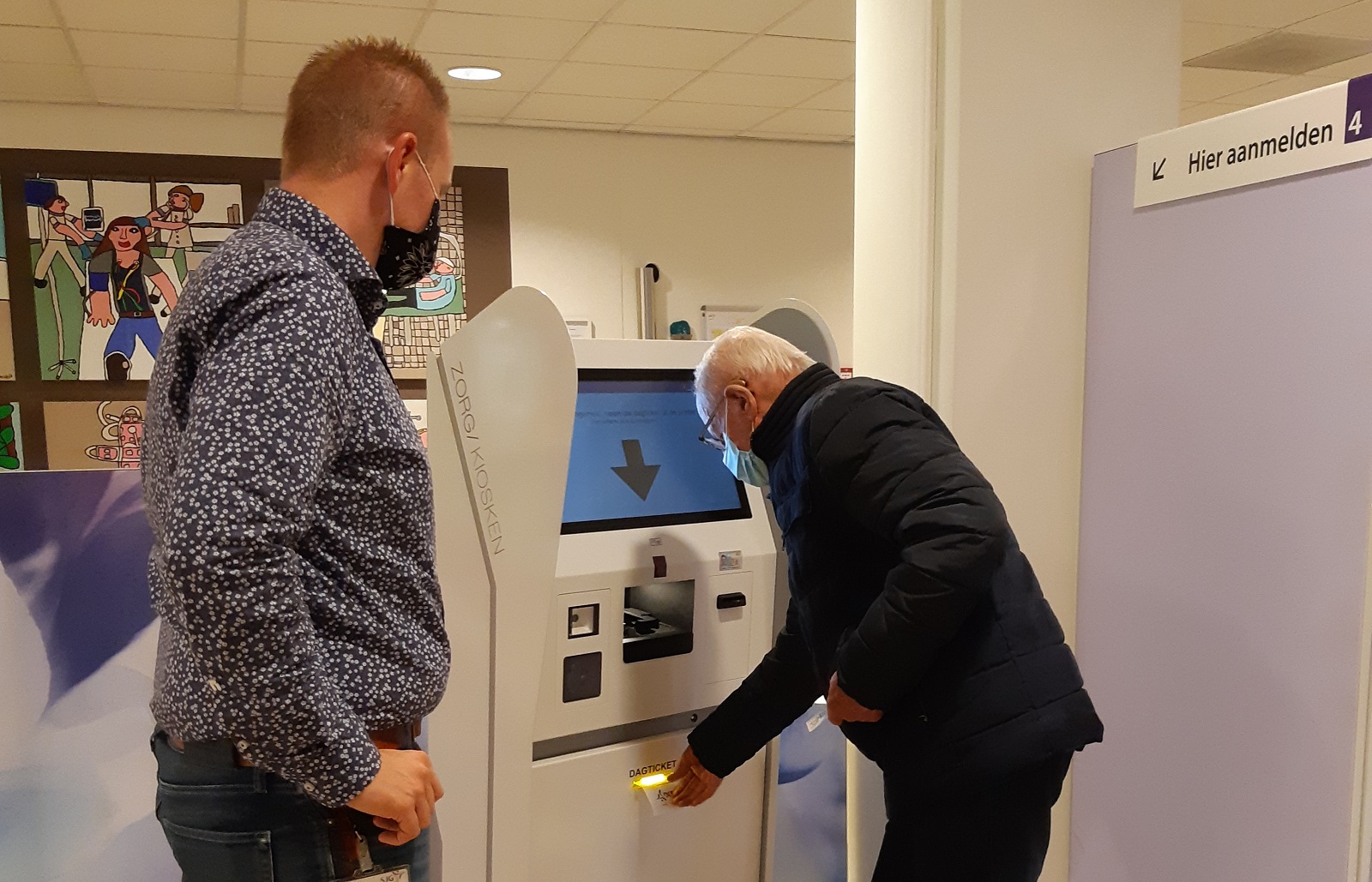The SJG hospital (St. Jans Gasthuis) in Weert used the implementation of check-in kiosks to streamline the entire check-in process. A large part of patients now checks in online. Roel Rinkens is the IT implementation specialist in SJG Weert and is sheds some light on the of the implementation process in the hospital.
What triggered you to start reviewing the check-in process?
We wanted to implement check-in kiosks to create a more efficient check-in process. Besides, it is in line with the current trend where the entire healthcare process is more in the hands of the patient and less dependent on others.
When I joined the Care Portal user group of HiX users, I heard that the feature to check the completeness of data through the patient portal was in development. We thought it would be very useful to also review our entire check-in process in order to fit in the kiosks and online data checks perfectly. We also thought: everything the patient can do from home will save the hospital work.
How did you handle the implementation process?
Internally, we divided the project organisation into several work groups: Process (senior outpatient staff, admission department, communication), Communication and Education (admission department, communication), and Technical. I was a part of the latter along with the ChipSoft consultants. Thanks to our close cooperation, we were able to create the improved check-in process we desired.
What does this new process look like?
An outpatient schedule appointment or an appointment for an operation or (day) treatment will be made by or for the patient. Patients that have set their correspondence preference to digital will receive an email with a confirmation of their appointment and are asked to go to the online portal, MijnSJG. Patients that do not prefer digital correspondence will receive a physical copy of the scheduled appointment confirmation. If the appointment is rescheduled or cancelled, the patient will also receive a message.
The day before the appointment or operation/(day) treatment, the patient will receive an email at 5.00 AM describing the check-in process. The email also asks the patient to check in via the MijnSJG portal. During the online check-in process we ask the patient to check their patient, insurance, and contact details, as well as the opt-in registrations and care partners, such as their GP, dentist and, pharmacy. We also ask the patient to fill in the screening form for MRSA/BRMO (antibiotics-resistant bacteria) and/or COVID-19. After the confirmation, the patient will receive an overview of all appointments and/or operations/(day) treatments for which they have checked in online.
In the hospital, the patient will be asked to check in with a valid document of identification at one of our central check-in kiosks. During the check-in process, the patient will be made aware that the data they have checked online do not have to be checked again. With just one push of the button, the patient will arrive at the check-in screen. The patient will then check in and receive a day ticket. This ticket also contains the route to the reception area.
What are the effects of this new process?
We started using the check-in kiosks and the online check-in process on the 28th of September 2020. Before going live with the new system we already had a relatively high use of the patient portal; the norm for the use of the online portal for patients was 48.7% for September. This increased to 58.2% in October. This is almost an increase of 10% when the only extra functionality we added to the portal was checking in online. That's why we're fairly certain that the new check-in process is the cause of this increase.
What are the biggest advantages for patients?
First of all, they control whether their contact and insurance details are up-to-date so we are able to contact them at all times. Secondly, the check-in process in the hospital is quicker. We estimate that the average time of a patient at the kiosk has decreased from 40 to 15 seconds. That is great, because patients want to get to their destination as soon as possible.
What does your hospital gain from this new process?
We also benefit from patients checking in and navigating through the hospital quicker. This is of inestimable value, especially in times of COVID-19. Outpatient assistants also let us know that they suspect that the patient details in HiX are more reliable than when entered by the patient in the hospital. They think this is because a patient is at ease in their own home and can take their time to enter their details. Physicians also tell us that patients look at their own health record more often and are therefore more prepared during a consultation.
What is your advice for other hospitals?
Just go for it and look at the process from the patient's perspective. Try to implement functionalities that are coherent with a process in order to create value for patients in their experience when using the portal. Try to implement as little 'loose components' as possible, such as questionnaires. It has to be part of a process where timeliness is a big part, especially when you're asking the patient to do something. Make sure that it is clear that certain actions are expected of the patient at certain points in the patient journey. That is true for our new check-in process: the patient makes an appointment online and receives a digital reminder. That reminder is also the indication that the patient should check their details and check in online.

.png?RenditionID=34)






